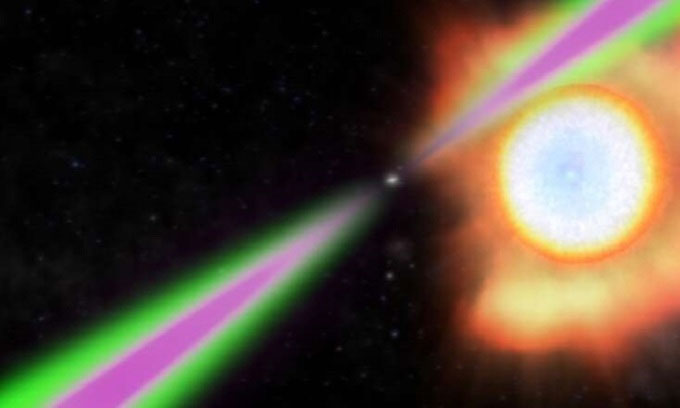Astronomers Discover Heaviest Neutron Star Ripping Apart Its Companion Star While Spinning at Over 700 Rotations Per Second.

The star weighs 2.35 times more than the Sun, making it the heaviest neutron star known.
The neutron star named PSR J0952-0607 was discovered in 2017, located about 3,000 light-years from Earth in the constellation Sextans. Recent measurements indicate that the star has a mass of 2.35 times that of the Sun, making it the heaviest neutron star ever known, Space reported on July 26. A neutron star is the remnant of a supernova explosion when a massive star dies after exhausting its core fuel. Despite having a diameter of only a few kilometers, this type of star has a mass equivalent to or greater than that of the Sun, ranking among the densest objects in the universe, alongside black holes.
PSR J0952-0607 completes 707 rotations per second, placing it among the fastest-spinning neutron stars. Due to its unique nature, PSR J0952-0607 may help scientists answer many questions about neutron stars. PSR J0952-0607 is part of a binarystar system known as a “black widow” pulsar, named after the infamous spider that consumes its mate. Such star systems include a neutron star that consumes material from its companion star. The neutron star at the center of the system is very difficult to study due to its extreme dimness.
Astronomers can estimate the mass of PSR J0952-0607 by focusing on the signatures of its companion star, which has now shrunk to the size of a large planet, approximately 20 times larger than Jupiter. Using the W. M. Keck Observatory in Maunakea, Hawai’i, the research team was able to obtain visible light spectra emitted from the fading star. By comparing this with the spectra of similar stars, they could measure the orbital velocity of the companion star and calculate the mass of the neutron star.
F. Alex Filippenko, an astronomy professor at the University of California, Berkeley, and his colleague Roger W. Romani, an astrophysics professor at Stanford University, have studied over a dozen black widow binary systems in recent years, but only 6 of these contain a companion star bright enough for them to calculate the mass of the neutron star. The results of their research have been published in the Arxiv database.


















































